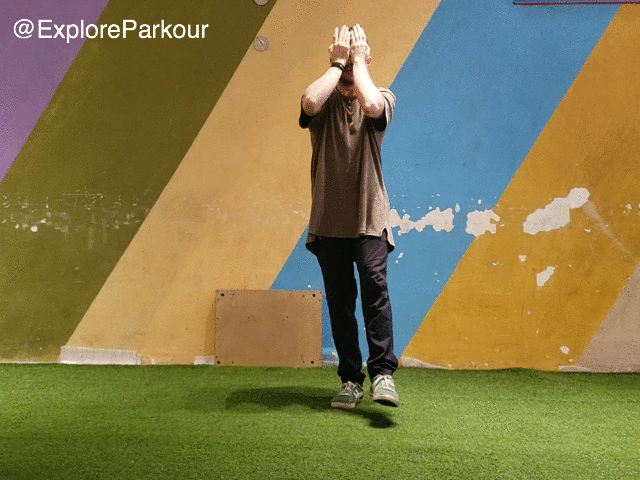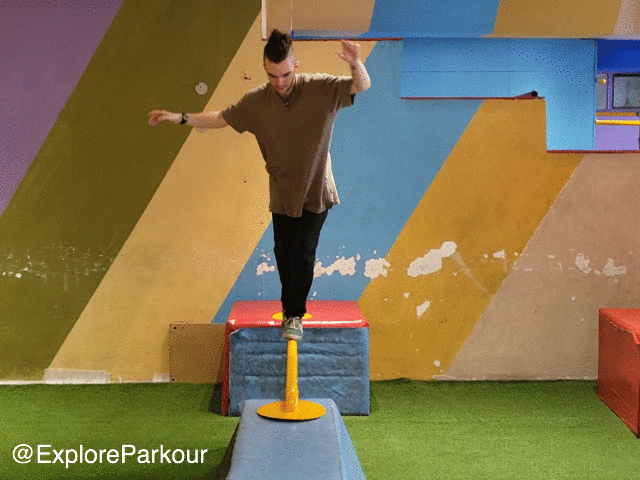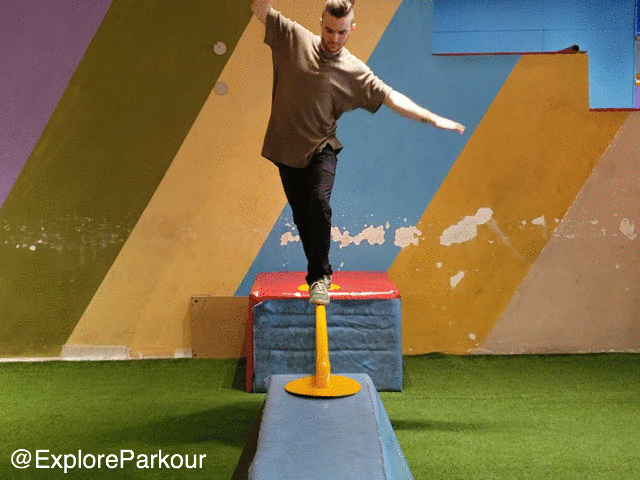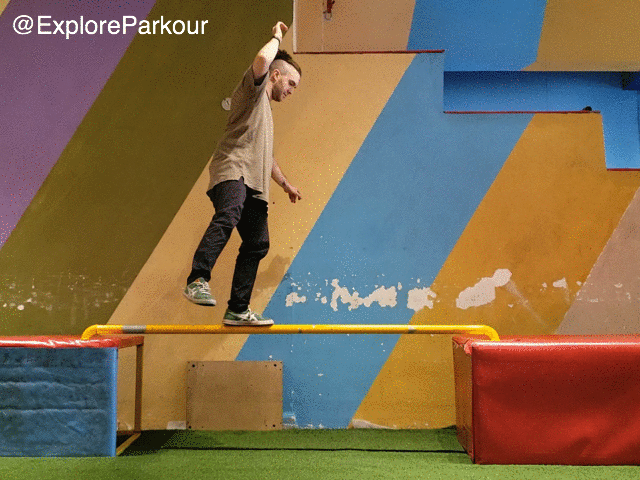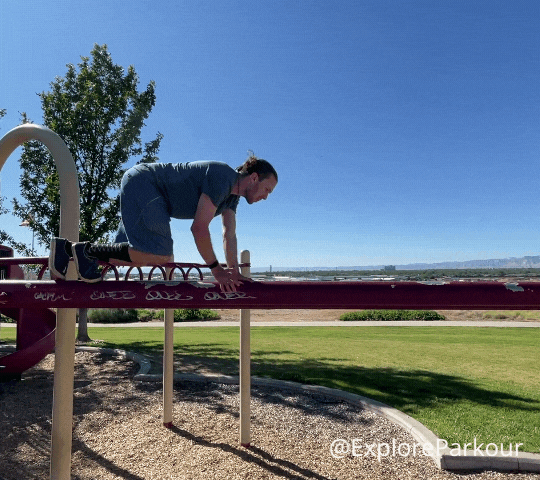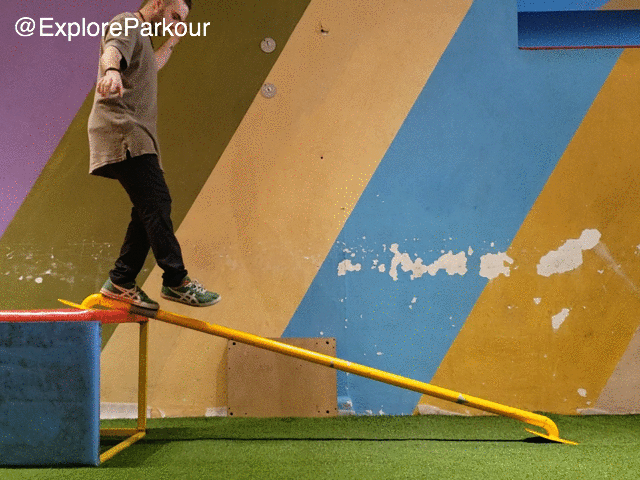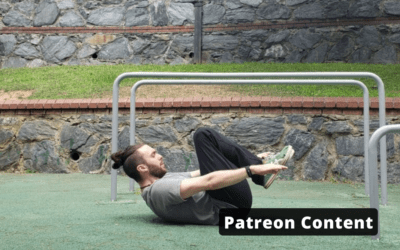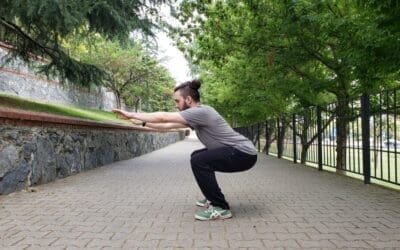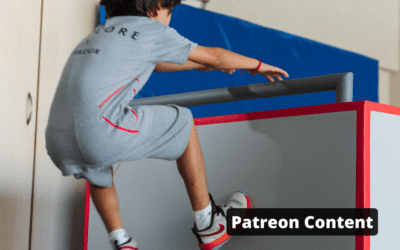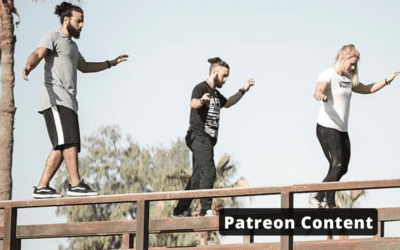Also known as: Balance Walk
Movement Pieces
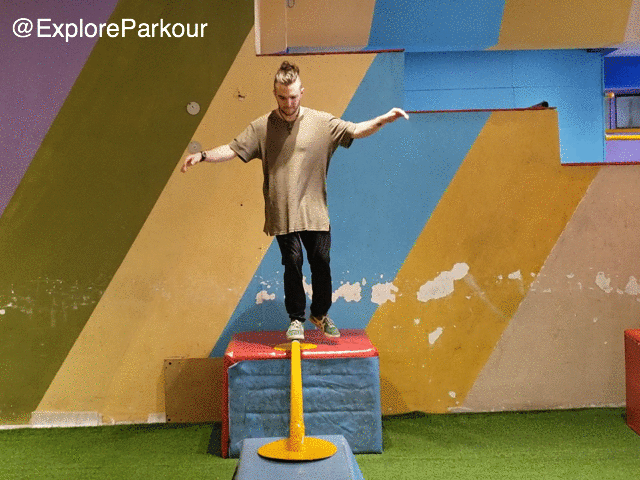
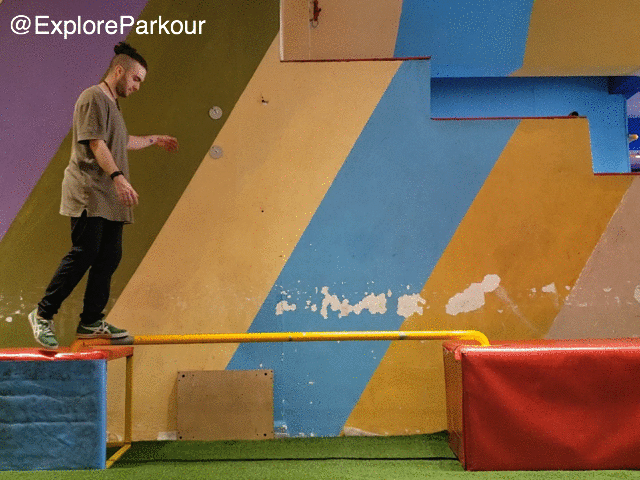
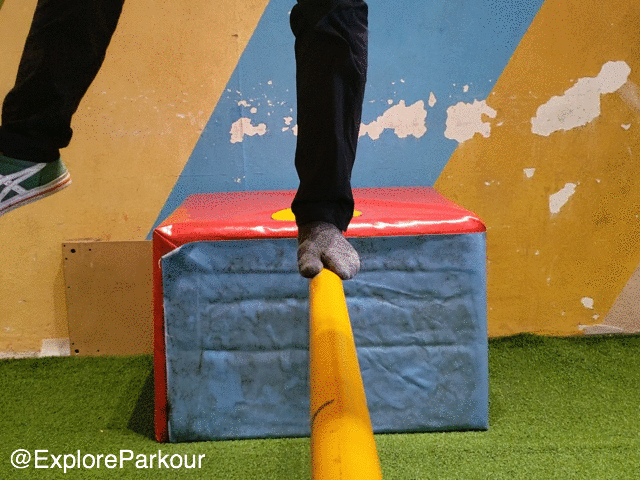

The basic sequence of micro-transitions in this move is…
-Reach with one foot aiming to “grip” the bar between your big toe and middle toe. (If the object is too wide you are aiming for a straight foot)
-Once you are “locked in” bring the rest of the foot down and shift your weight onto that foot.
-You should be in a single foot linear balance and from here you will repeat steps 1 and 2
Common Problems
- Overcorrecting Counterbalance
- Crooked Foot Placement
- Rushing to the End
- Focal Point too Close to Feet
- Committing Weight to Next Step Too Soon
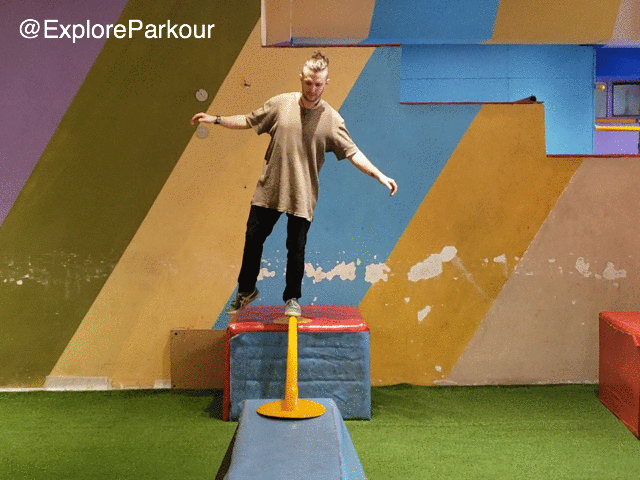
When you over try to use your extremeties (arms and the free leg) to counterbalance it can be easy to overcorrect. The order of operations for balance that I like goes from:
ankle -> knee -> hips -> chest -> extremeties.
What this means is I try and do most of the balance with the first joint in this sequence and then I let the next one in the sequence help if it’s not enough.

It is important to be able to balance on all the parts of your foot and at all angles but I’ve found in the beginning focusing on gaining control and understanding in one and then progressing to the variations to be more beneficial.
A neutral foot placement is also more balanced for your muscles and can help the stability in your legs for jumps.

Sometimes this is a focal point issue but often I see that it’s a case of getting ahead of ourselves mentally. Try not to let the pressure of almost finishing the balance get to you by just taking each step as it goes, don’t think too far ahead.

Generally speaking a relatively straight body position is going to be the best for normal walking balance. When you bend your neck or body over too much to see where you are placing your feet you not only make your body work harder to balance but you limit your vision which plays a part in balance as well.
Try to look 3ft (1m) ahead or like slackliners do at the end point of your balance. Once you gain consistent control like this you can play with more difficult focal points.

Walking on the ground is not equal to walking on a bar and if you treat it as such one day you might realize it in the worst way.
Instead of committing your weight to the next step before it’s even touched the bar I like to imagine like I’m not sure the obstacle even exists so I am “testing the water” before I commit to the next step.
Related Exercises
Tuck Up
Where should I feel this Exercise? Abs and hip flexors predominantly. Can also use the shoulders and pecs a bit for the arm movement. What’s the Main Purpose? Helps develop power for jumps, flips and other movements (like the cat pass) that require an explosive...
Squat
Where should I feel this Exercise? Quads, Hamstrings, Glutes, and slight tension in your abs are the goals here. What’s the Main Purpose? The squat is great for understanding body alignment with your back and knees for the more high impact movements in Parkour. It...
Run
Where should I feel this Exercise? Generally you can feel this movement in your shin muscles, calf muscles, hamstrings, quads, hip flexors and glutes. It's a great full lower body exercise that also will challenge your breath control and your cardio. What’s the Main...
Related Techniques
Cat Leap
Also known as: Cat, Arm Jump, Cat JumpMovement Pieces The basic sequence of micro-transitions in this move is… - Like a Precision Jump, start with your toes at the edge of the obstacle. Squat - close to 1/3 - and bring your arms down and back as you lean forward -...
Cat Pass
Also known as: Kong, Monkey Vault or Saut de Chat.Movement PiecesThe basic sequence of micro-transitions in this move is… - Choose a stable obstacle close to your hip height, with short width and enough space to place your hands on the top. - Give yourself enough...
Static 2 Feet Inline
Also known as: Parallel balance, Straight balance, Inline balanceMovement Pieces The basic sequence of micro-transitions in this move is… - There are many ways to go up on balancing obstacles to perform this technique. For now, we will focus on a low, long bar. -...


